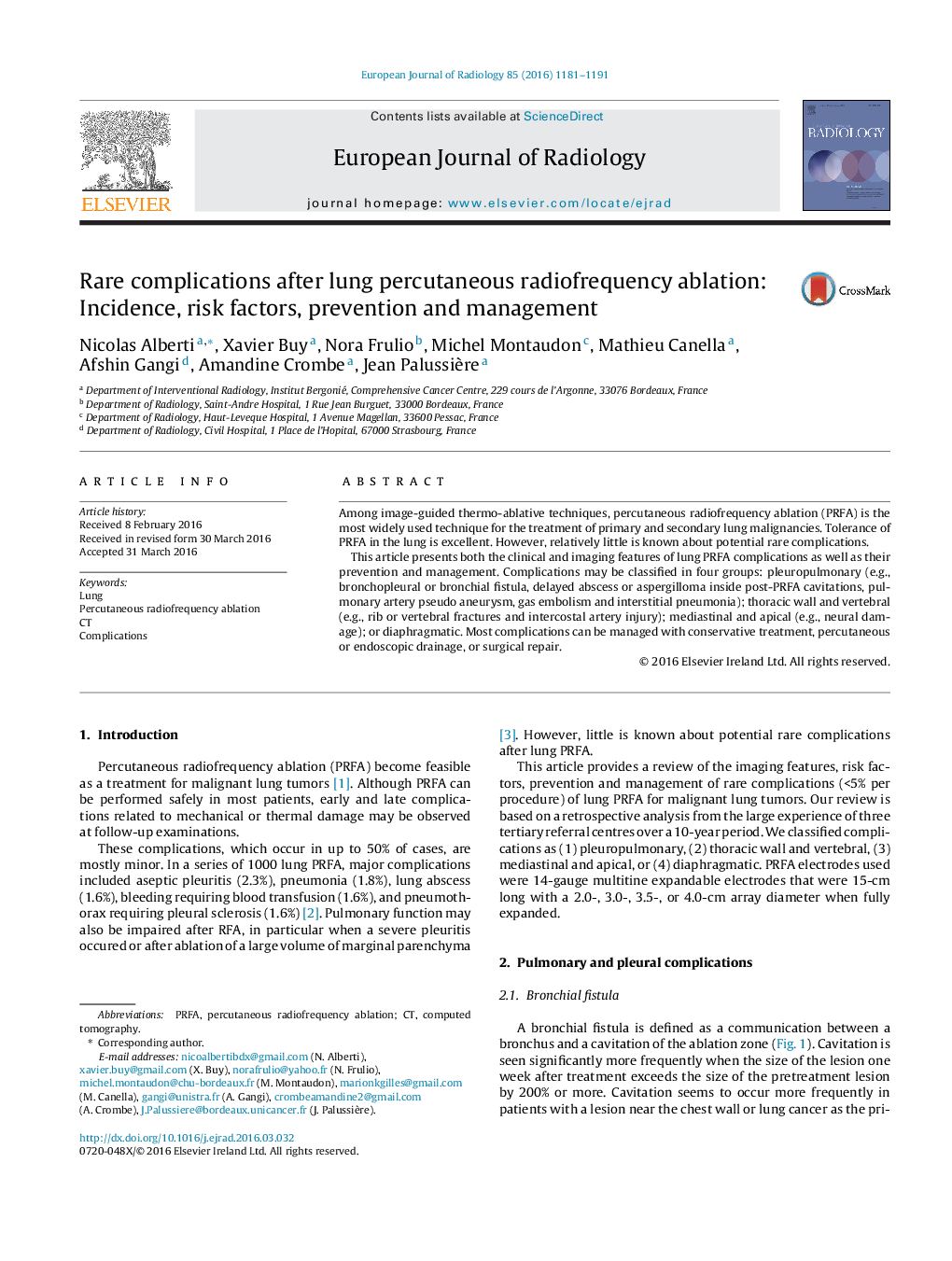| کد مقاله | کد نشریه | سال انتشار | مقاله انگلیسی | نسخه تمام متن |
|---|---|---|---|---|
| 4224842 | 1609741 | 2016 | 11 صفحه PDF | دانلود رایگان |
• Tolerance of radiofrequency ablation in the lung is excellent.
• However, rare and serious complications after radiofrequency ablation can occur.
• Knowledge of anatomy, risk factors and prevention methods is required.
• Thermal insulation techniques have been recommended in order to protect the “at-risk” organs.
Among image-guided thermo-ablative techniques, percutaneous radiofrequency ablation (PRFA) is the most widely used technique for the treatment of primary and secondary lung malignancies. Tolerance of PRFA in the lung is excellent. However, relatively little is known about potential rare complications.This article presents both the clinical and imaging features of lung PRFA complications as well as their prevention and management. Complications may be classified in four groups: pleuropulmonary (e.g., bronchopleural or bronchial fistula, delayed abscess or aspergilloma inside post-PRFA cavitations, pulmonary artery pseudo aneurysm, gas embolism and interstitial pneumonia); thoracic wall and vertebral (e.g., rib or vertebral fractures and intercostal artery injury); mediastinal and apical (e.g., neural damage); or diaphragmatic. Most complications can be managed with conservative treatment, percutaneous or endoscopic drainage, or surgical repair.
Journal: European Journal of Radiology - Volume 85, Issue 6, June 2016, Pages 1181–1191
